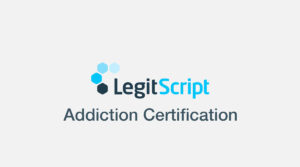A Guide for Drug & Alcohol Rehab Centers
In the digital age, a well-crafted Google Ads strategy can be a game-changer for businesses across all industries. For Drug & Alcohol Rehab Centers it’s an opportunity to reach out to those in need and guide them towards the path of recovery. However, the healthcare industry has unique challenges and restrictions due to privacy concerns, such as the inability to remarket or retarget users. This article will guide you through the first steps to creating a great Google Ads strategy explicitly tailored for Drug and Alcohol Rehab Centers.
Understand the Customer Journey
The first step in creating a successful Google Ads strategy is understanding the customer journey. This involves comprehending how potential patients interact with your brand, what they are looking for, and how they make decisions about their healthcare.
For instance, a person seeking help for substance abuse might start by researching symptoms online, looking for treatment options, and searching for a reputable rehab center. Each stage represents a touchpoint where your ad can make a difference.
Use data and analytics to gain insights into customer behavior and preferences. Google Analytics is a powerful tool that can help you understand where your traffic is coming from, what pages are most visited on your website, and what keywords users search for.
Learn more about keyword selection.
Identify Key Moments
Once you understand the customer journey, the next step is to identify critical moments where you can engage with potential patients. These moments could be when a person first discovers your brand, considers treatment options, or is ready to seek help.
For example, if a user searches for “symptoms of alcohol withdrawal,” this could be a pivotal moment to display an ad about your detox services. Similarly, if a user is searching for “best rehab centers near me,” it indicates they are ready to take the next step.
Optimize for Mobile
In today’s world, more and more people are using their smartphones to search for information, including healthcare services. Therefore, your website and online services must be optimized for mobile devices.
A mobile-friendly site improves the user experience and ranks higher in Google search results. Ensure your site loads quickly, is easy to navigate on a small screen, and has clear calls to action.
Implement Smart Bidding
Smart Bidding is a Google Ads feature that uses machine learning to optimize your ad spend. It automatically adjusts your bids based on various factors, including the time of day, the device the customer is using, and the customer’s location.
For example, if data shows that most inquiries for your rehab center come from mobile searches in the evening, Smart Bidding can automatically increase your bids during these times to maximize your ad visibility.
Measure and Optimize
Finally, continuous measurement and optimization are the keys to a successful Google Ads strategy. Use tools like Google Analytics to track the performance of your ads and gain insights into what’s working and what’s not.
For example, if one of your ads is not performing well, you might need to tweak the ad copy or adjust the target keywords. On the other hand, if an ad is performing exceptionally well, you might want to increase the budget for that ad to reach more people.
In conclusion, a great Google Ads strategy involves understanding the customer journey, identifying key moments, optimizing for mobile, implementing smart bidding, using Customer Match, and continuously measuring and optimizing your efforts. By following these steps, Drug & Alcohol Rehab Centers can effectively reach out to those in need and guide them toward recovery.


